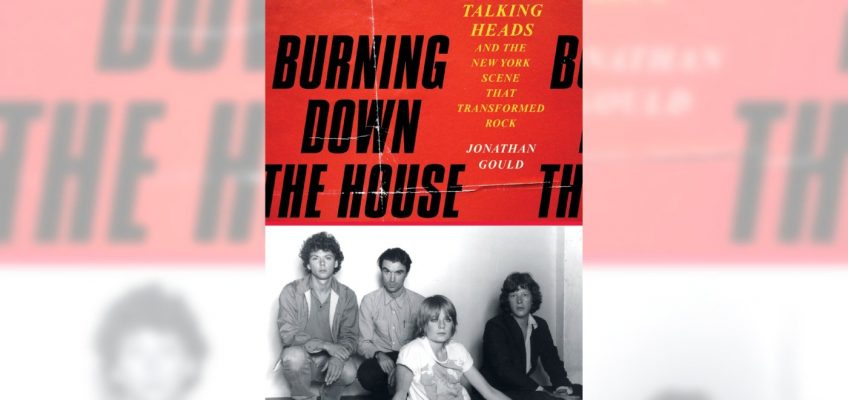By ANN LEVIN
Talking Heads fans, rejoice! Hard on the heels of the re-release of “Stop Making Sense,” the 1984 Jonathan Demme film widely considered the best concert movie ever made, Jonathan Gould has published a comprehensive biography of the seminal band that injected an art school vibe into popular music and forever changed rock ‘n’ roll.
Related Articles
Summer books 2025: Get lost in spiritual or just plain weird books
Literary pick for week of June 15: Craig Thomson’s ‘Gingseng Roots’
Literary calendar for week of June 15
Readers and writers: Six picks for summer reading
Corinne Bailey Rae’s first children’s book, ‘Put Your Records On,’ draws upon her musical past
Gould, the author of well-received books on Otis Redding and the Beatles, chronicles in meticulous detail the rise and fall of the band that got its start in New York City’s underground punk scene and ended up touring the world with a repertoire shaped by blues, funk and jazz.
He begins “Burning Down the House: Talking Heads and the New York Scene That Transformed Rock” with a vivid description of the drizzly June night in 1975 when the original trio – singer/songwriter David Byrne, bassist Tina Weymouth and drummer Chris Frantz – made its debut at the seedy club CBGB in downtown Manhattan, opening for the Ramones before a handful of patrons. With their “unremarkable haircuts” and “nondescript casual clothes,” they offered a sharp contrast to the “baroque turn” that rock fashion had taken in the 1970s, Gould observes.
“The qualities that characterized this neophyte group in their first public performance centered on the awkward, disquieting intensity of their singer-guitarist, David Byrne, their sketchy, skeletal arrangements, and the quirky intelligence of their songs,” Gould writes. “Tall and thin, with a long neck and an anxious, wide-eyed stare, Byrne stood stiffly at the microphone, his upper body jerking and jiggling like a shadow puppet as he scratched out chords on his guitar.… Instead of doing his best to command the stage and the room, Byrne looked trapped by his surroundings, as if he were prepared, at any moment, to make a break for the door.”
Within a couple years of their zeitgeist-changing performances, they enlisted keyboardist/guitarist Jerry Harrison, adding a much-needed dose of professionalism to the band. Gould, a former professional musician, writes exceedingly well about music but suffers from a kind of completism, cramming in an almost mind-numbing level of detail including the name of the elementary school in Pittsburgh where a young Frantz first took up drums to every military posting of Weymouth’s naval aviator father.
Though much of the material is fascinating, including his observations about how Byrne’s then-undiagnosed Asperger’s syndrome may have influenced his music and relationships with the other band members, it is likely to be a bit too much for all but the most diehard fans.
AP book reviews: https://apnews.com/hub/book-reviews


Leave a Reply